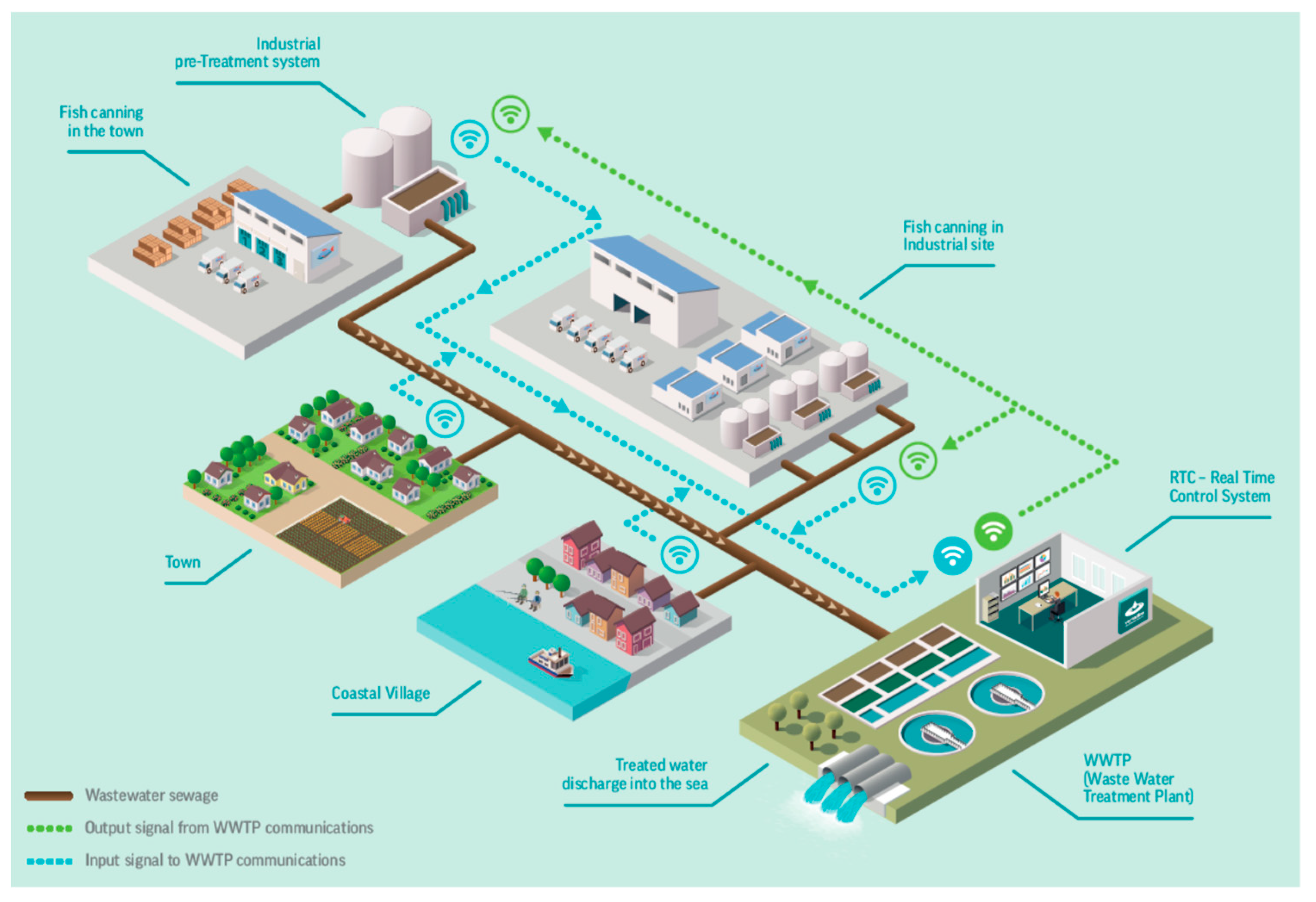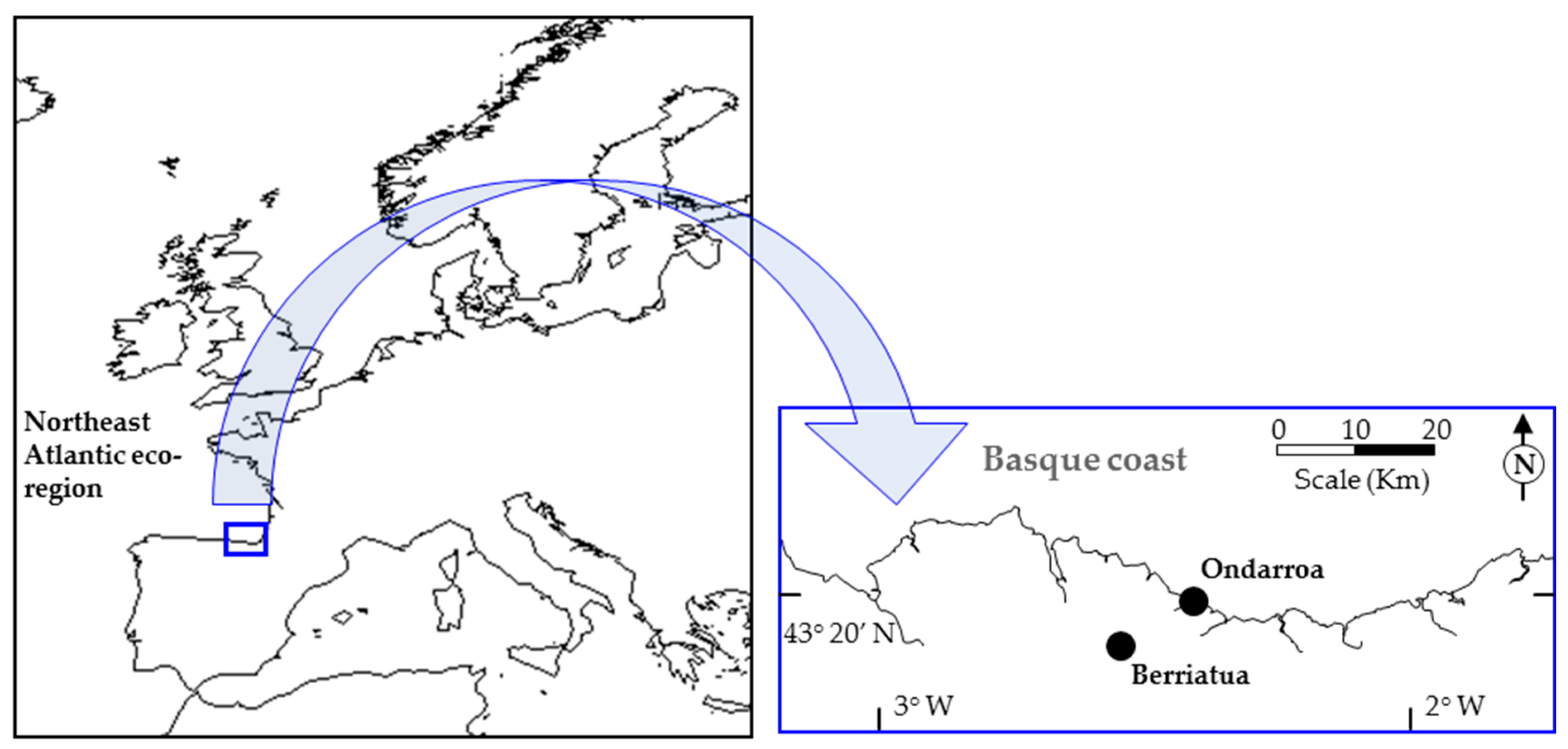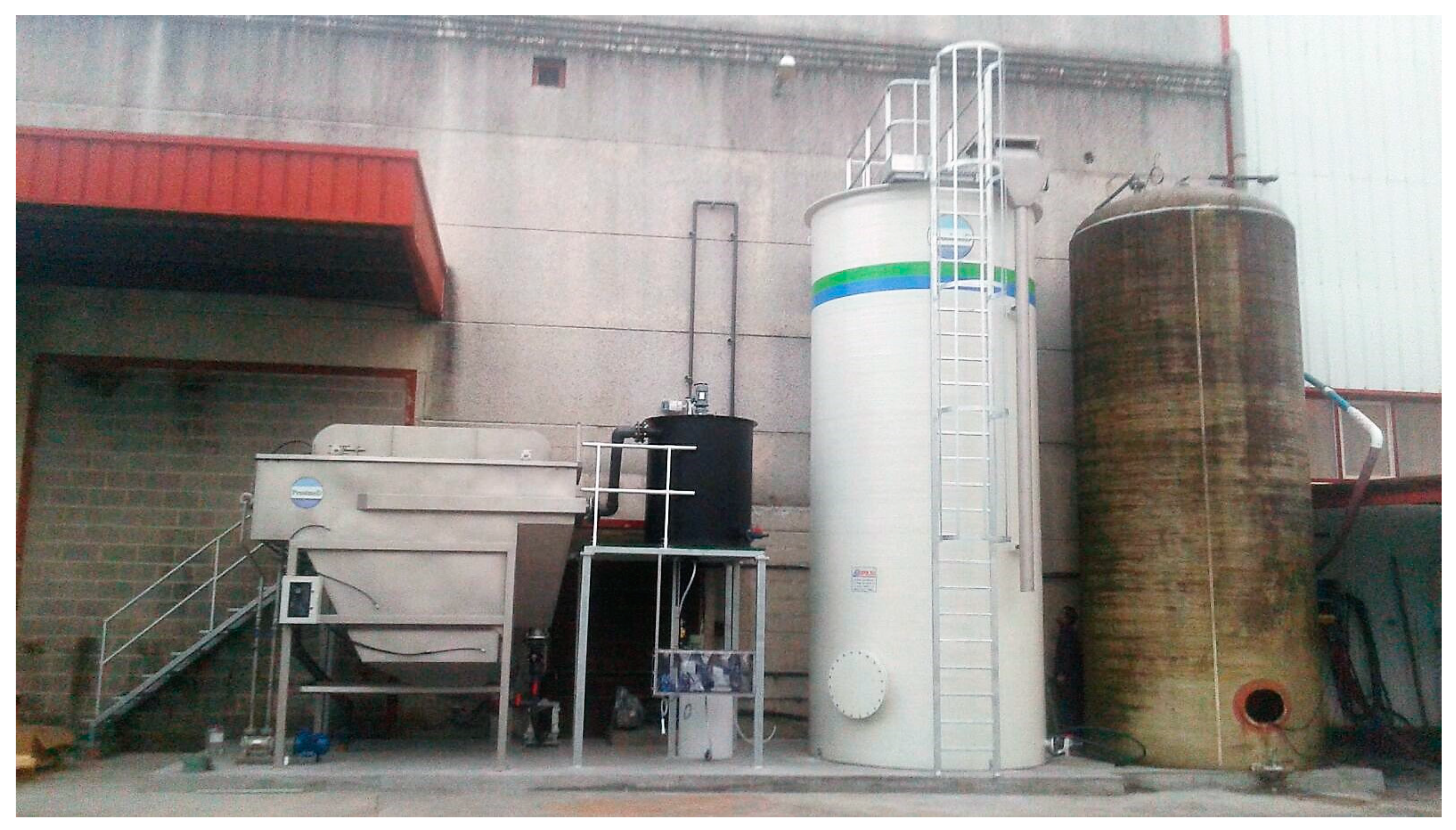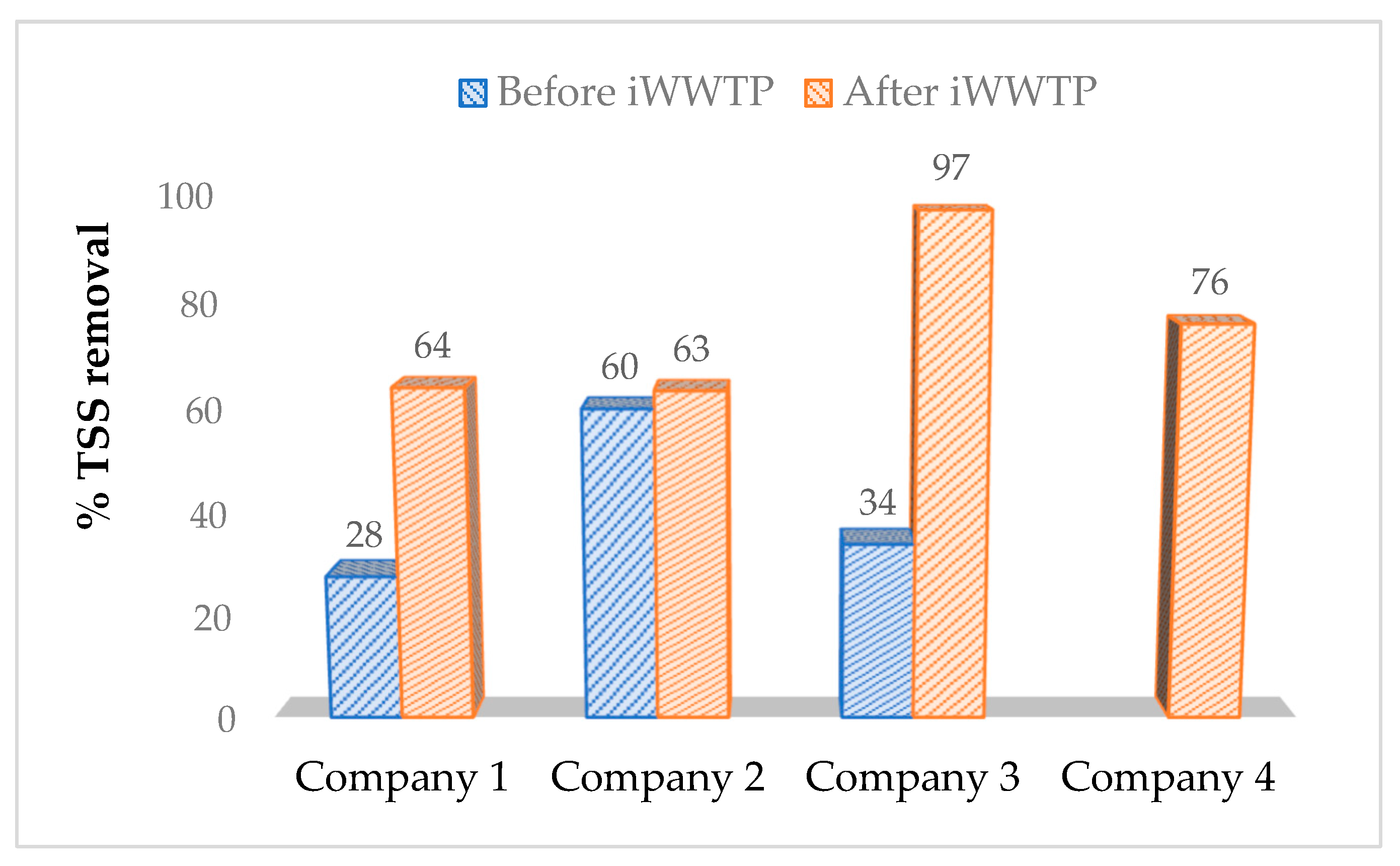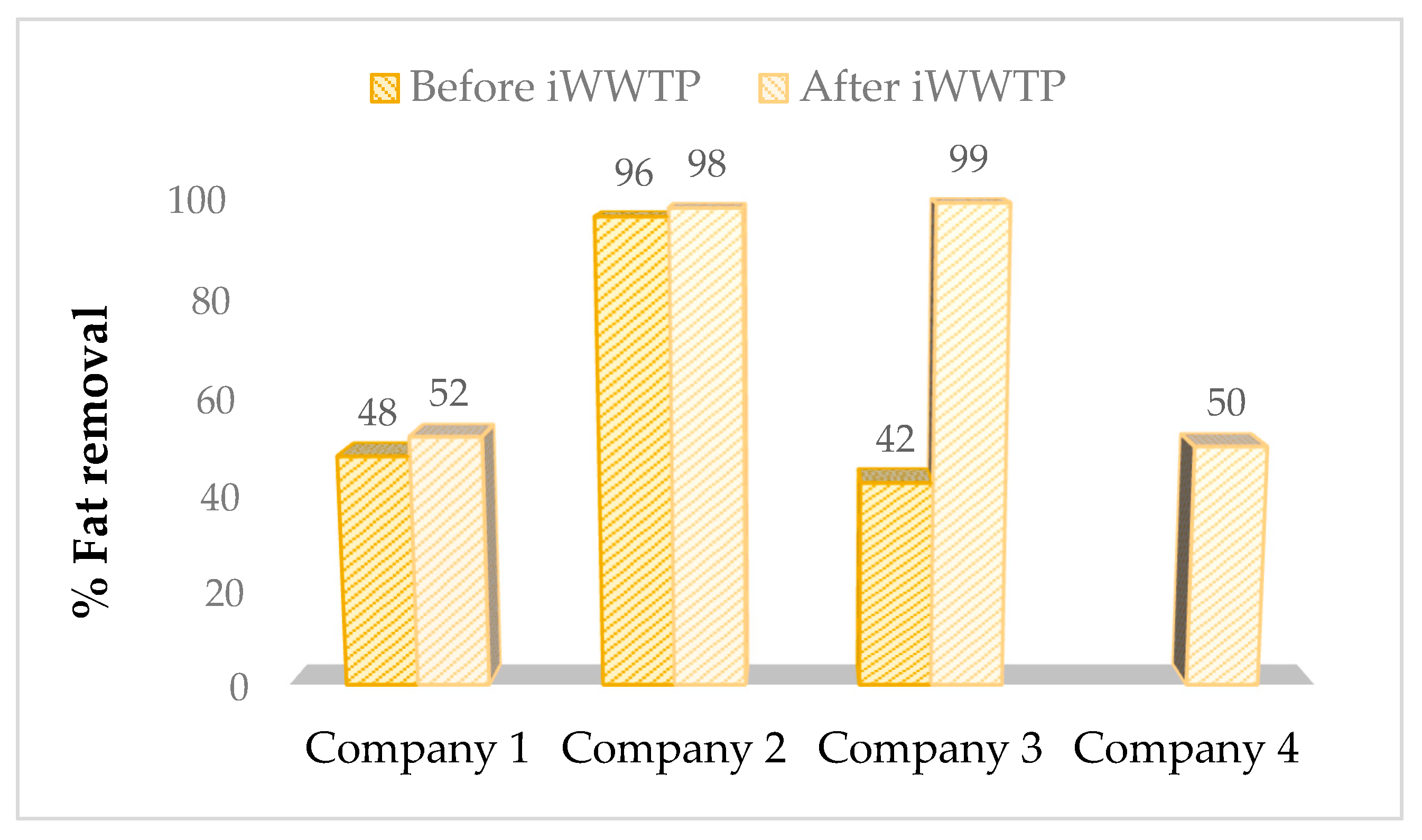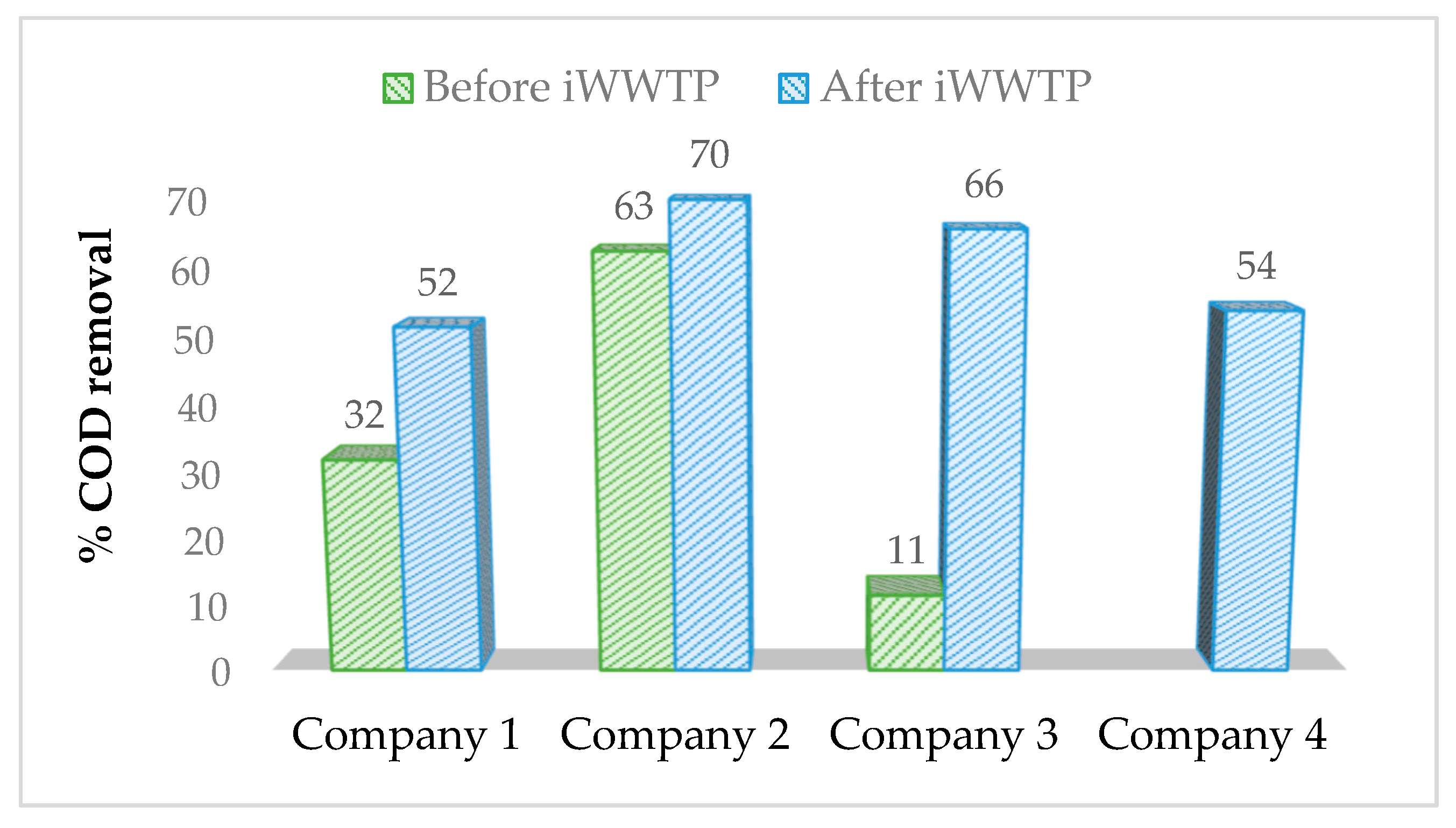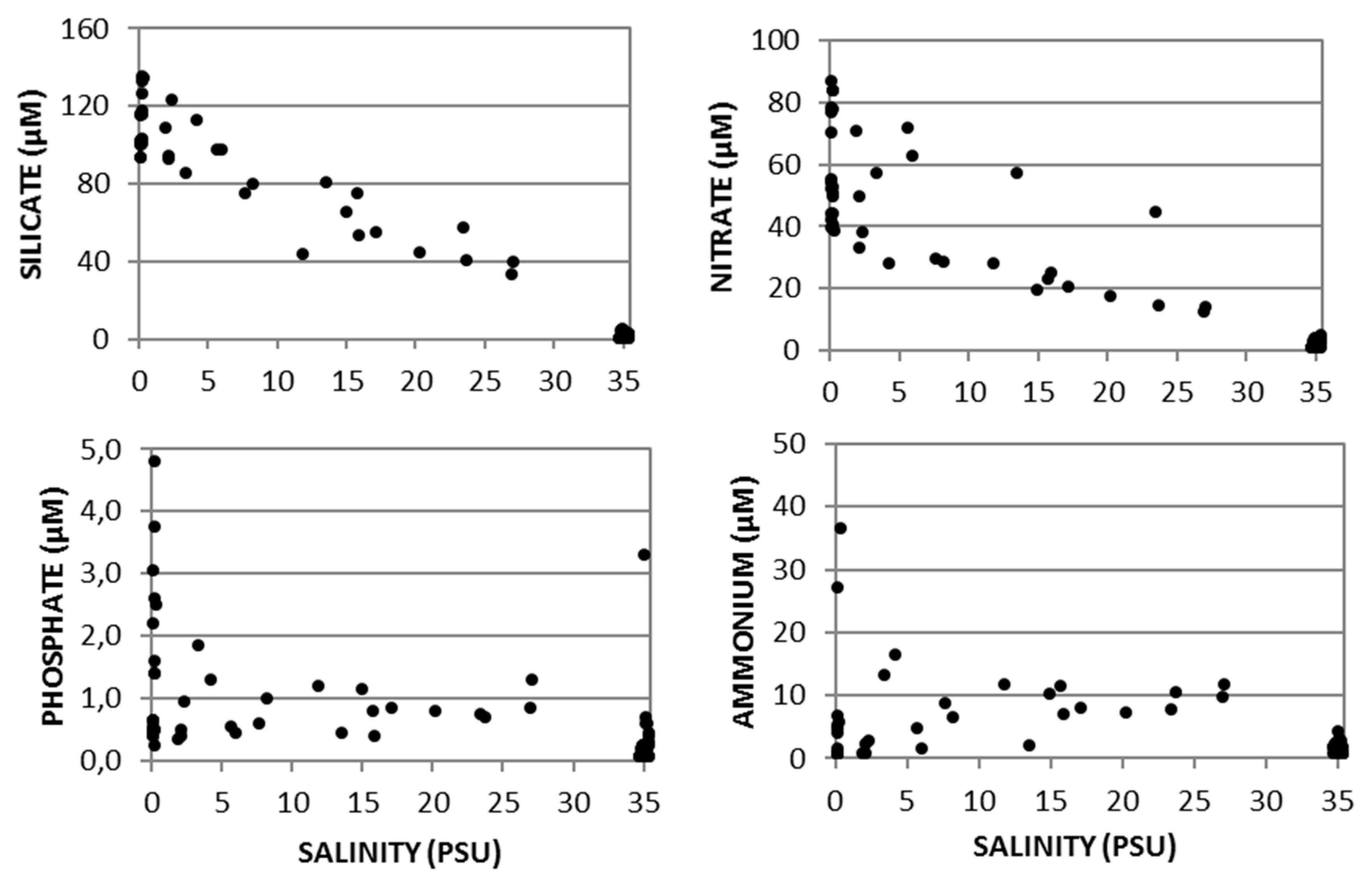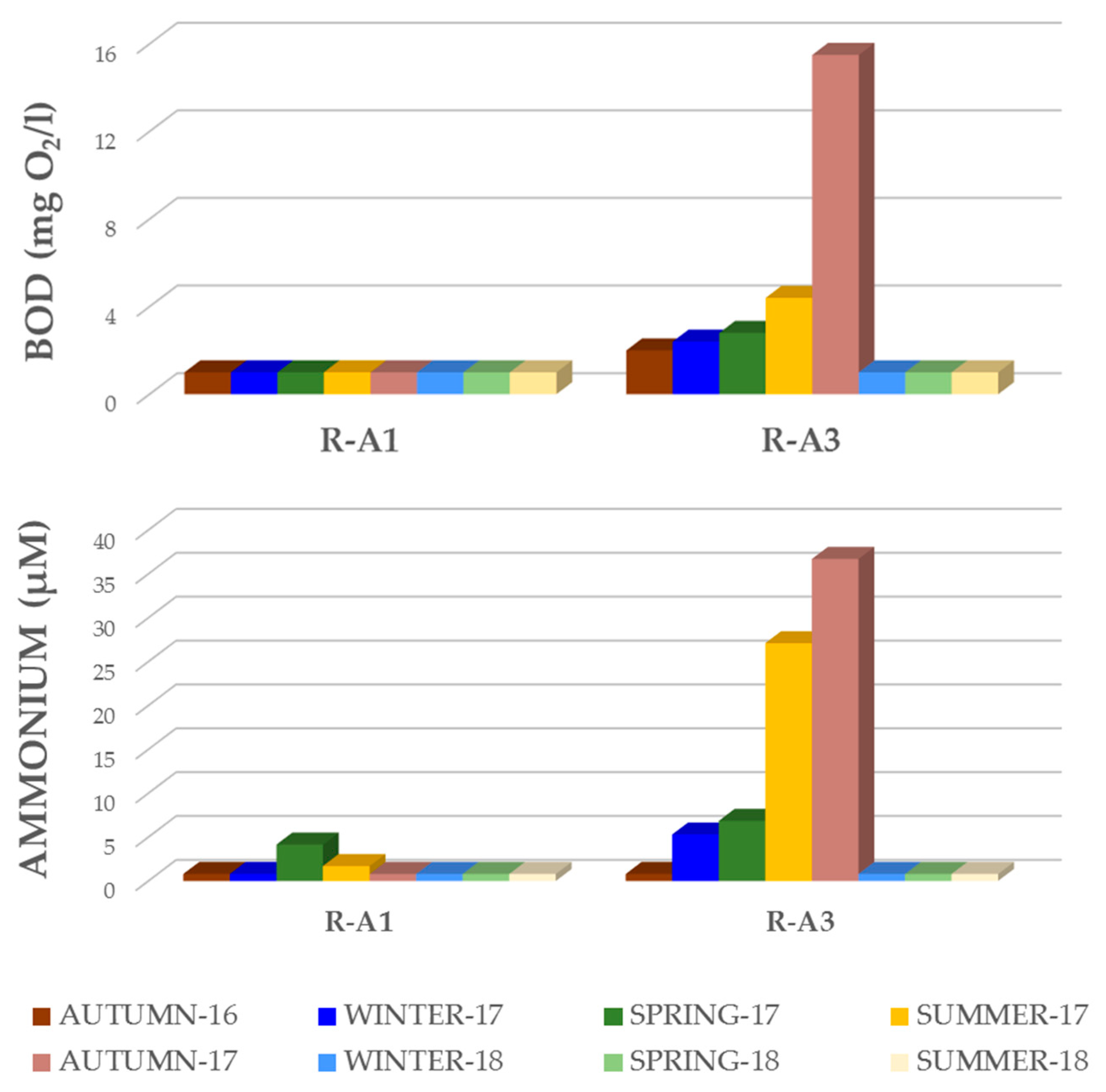Bellow, the results obtained so far and the impact achieved due to the implemented actions are presented.
3.1. Fish Canning Industries
Each company selected several improvement actions related to the reduction of water consumption and of the pollution of wastewater. For that purpose, a characterization of effluents was made at the beginning of the project and after the implementation of the cleaner production plan.
Based on these data, a series of recommendations have been made regarding the minimization of water consumption and the reduction of pollution in discharges.
The improvement areas that are common in each company are
- -
the water consumption and reuse of autoclave cooling water
- -
separation of fats directly from the tuna cooker
- -
management of brine from tuna cooker
The results of the application of eco-efficient actions in the processes of food SMEs are shown in
Table 6. Four canning companies achieved important reductions on their water consumption depending on their process performance at the initial point and the improvement measures selected. Individually, fish canning industries 2 and 3 highly reduced their water consumption, up to 62% and 55% respectively, and, consequently, they also minimized their water discharges considerably. Company 1 focused on implementing measures related to the reduction of the pollution load. Hence, the effect on the water consumption savings was lower. On the other hand, company 4 decided to implement actions for preventing the ammonia and sulfur compounds in their effluents because the water consumption and effluent organic load were close to the values suggested by the best available techniques reference document (BREFs) [
3].
Overall, the minimization of the water consumption allowed the fish canning industries to reduce it by 39% on average, wastewater discharges to the environment were also reduced by 26%.
The application of improvement actions and a better use of raw materials in each of the canning companies has resulted in an increase in yield in the production, which has reached an average value of 0.05% increase in its productivity (
Table 6).
On the other hand, the wastewater quality of the four companies has been measured before and after the iWWTP, in order to effectively track the improvements due to the implementation of the eco-efficiency plan as well as the installed wastewater pretreatment.
Although the analytical control parameters measured were pH, temperature, dissolved oxygen (DO), conductivity, salinity, total suspended solids (TSS), chemical oxygen demand (COD), biological oxygen demand (BOD), grease and oils, ammonium-nitrogen (NH4+-N), and total nitrogen, the more representative ones were selected to explain the results: COD, TSS, and fats. It must be mentioned that an analytical characterization of company 4 was only carried out after the iWWTP, as there was no access to the samples before it.
Regarding the presence of solids in the wastewater, all companies modified their cleaning protocols emphasizing the dry cleaning of floors to prevent solids in the effluents. Further, companies 2 and 3 redesigned the drainage grids to retain finer solids and enabled the easy extraction with another replacement grid, which prevents solids from escaping during the task of cleaning the grids. Initially, the TSS in the influent was around 2600 mg/L for all companies, but there were some differences in the removal of solids (
Figure 5). However, in the case of company 2, it was observed that the iWWTP needed to adjust its operation and management to improve its efficiency for TSS and COD removal, as the decrease of pollution was very poor.
Companies 1 and 2 achieved most of the fat removal before the iWWTP, mainly due to the implementation of the recommended eco-efficiency measures such as removing surface grease from the brine cooker and the suitable maintenance of the grease recovery system. However, the initial concentration of fat was different between companies 1 and 2, with 400 mg/L of grease and 2360 mg/L of grease, respectively. This approach allows both companies to treat fat as a valuable by-product due to the high content of omega-3, allowing its sale to third parties. However, company 3 achieved approximately half the percentage of fat removal before the iWWTP (
Figure 6). Therefore, this cannery was able to improve its performance of fat removal to increase the fat reuse as a by-product and decrease the iWWTP costs.
In this type of wastewater, the COD parameter depends mainly on the content of fish solids and fats, so that the results of COD vary accordingly. Companies 1 and 2 got a significant improvement on COD removal due to the implementation of grease and solids removal and increased that improvement due to the installed wastewater pretreatment. Furthermore, company 3 obtained a higher progress due to the pretreatment, as this company implemented fewer measures of those recommended in the eco-efficiency plan with respect to pollution load (
Figure 7) because they focused on actions related to water consumption reduction.
It is imperative to emphasize that the contaminants removal achieved by the companies allowed them to save costs related to wastewater treatment and its maintenance, transforming their activity into a more efficient and into a more environmentally and economically sustainable one.
3.2. Surface Waters
Sampling campaigns tried to avoid flooding conditions as much as possible and were conducted when the river flow did not differ much from 2.5 m
3/s, which is the annual average reported for the River Artibai by Valencia et al. (2004) [
21]. However, variations in fluvial flow associated with the typical weather conditions of the time of year were observed, with relatively low values in summer and autumn and higher ones in winter and spring.
In
Figure 8, the distribution of the different variables measured related to nutrients in the surface waters (“in situ”, or in the laboratory) with respect to salinity is presented. This type of graphic representations serves to detect contribution processes or consumption in the different areas studied. Thus, in theory, a progressive dilution of the concentration of certain substances and materials (nutrients, particles in suspension, etc.) between fresh water, which is considered naturally enriched, and seawater is expected.
As can be seen in
Figure 8, the silicate showed a clear trend of linear decrease with salinity, something that was also perceived to a considerable extent for nitrate. However, the rest of the variables did not behave conservatively, in the sense that they were not proportional to the degree of dilution of fresh water with seawater. In this regard, ammonium and phosphate showed a strong temporal variability in the samples with a very high percentage of fresh water (~100%); its greater or lesser concentration in the fluvial zone and at the head of the estuary would reflect the existence of processes such as discharges, nitrification, consumption by microalgae, and so forth. In addition, phosphate sporadically peaked in the marine area that receives the discharges from the WWTP.
Among the variables measured in the river samples, the biochemical oxygen demand (BOD) and the ammonium concentration are the ones that best indicated the effect of the canneries’ discharges on the river water quality as well as the environmental improvement after the implementation of the project’s actions.
Figure 9 shows the time evolution of the BOD at the station located upstream of the industrial area (R-A1) and at the station located downstream (R-A3). At the R-A1 station, the limit of quantification of this variable was not exceeded throughout the study period. On the contrary, at the R-A3 station, the BOD reached or exceeded this value (2 mgO
2/L) during the first five campaigns, descending to the level of the R-A1 station from winter 2018. Among the values measured, that of the R-A3 station in the fall of 2017 did not meet the quality objective established for the rivers of the area according to the Water Framework Directive (2000/60/CE) [
1], when it exceeded 5 mgO
2/L.
The spatial and temporal distribution of ammonium was very similar to that of BOD (
Figure 9). Thus, this nutrient also indicates an enrichment of the river water in reduced substances after passing through the industrial area of “Gardotza” (R-A3), at least until the autumn of 2017, when all the canneries were connected to the urban sewerage system.
Regarding the rest of the inorganic nutrients that can give rise to eutrophication processes, no remarkable differences were observed between the two fluvial stations. In the same way, the discharges of the canneries did not affect either the conductivity or the water temperature of the receiving river environment. The conductivity values were consistent with those of salinity (both close to zero), as expected from the relationship between them according to the UNESCO equations [
22].
3.3. Environmental Impact (LCA)
The environmental impact assessment was made at the initial point of the project in order to evaluate and compare the impact with the previous and actual situation.
Table 7 shows the environmental impacts caused by the dumping of 1 m
3 of wastewater from the Ondarroa treatment plant and the total of four tuna canning industries of the project. As stated in the functional unit, this cubic meter is proportional to the annual discharges by both wastewater origins.
The impact to climate change caused by this spill is 1.18 kg CO2 eq. for each cubic meter discharged in 2015, the main origin of this impact being the urban WWTP in this case.
Regarding the eutrophication of fresh water, the total impact is 1.48 × 10−3 kg P eq. for each cubic meter discharged, to which the discharge of the canneries contributed with 72% of the impact. The same happened in the case of marine eutrophication where the impact is 3.49 × 10−2 kg N eq. and canning discharges represent around 69% of the total impact.
Considering that the direct discharge of the canneries is the main cause of the environmental eutrophication impacts, it is expected that these values will be considerably reduced once the improvements proposed by the LIFE VERTALIM are carried out.
